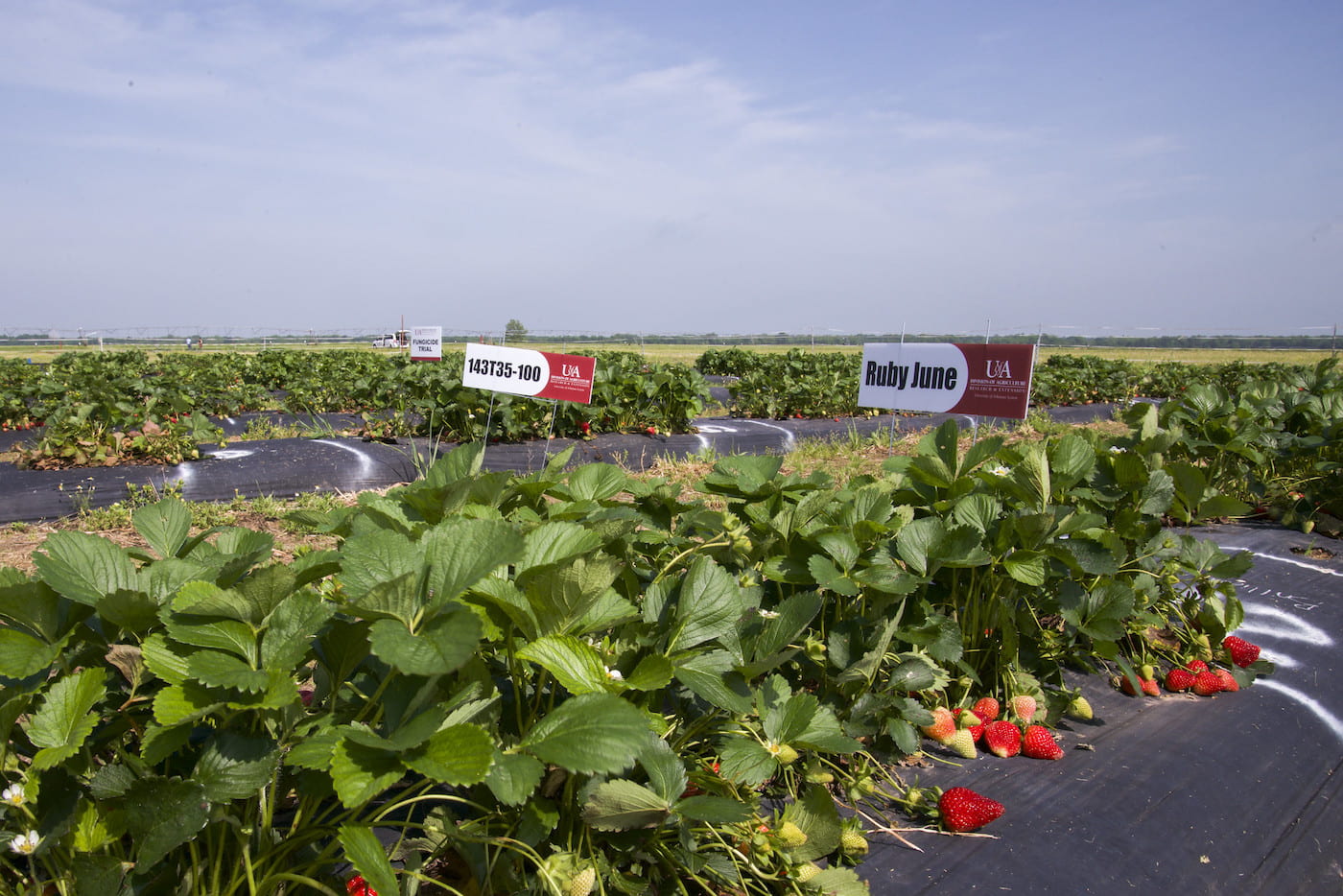Delayed Strawberry Planting in the Fall Impacts Spring Returns


Amanda McWhirt
Assistant Professor and Extension Horticulture Production Specialist – Horticulture
Contact Amanda McWhirt
The Problem
Strawberry growers in Arkansas know that planting strawberries in the fall will yield a robust crop the following spring. But sometimes growers have to delay planting when the soil is too wet for ground preparation. For example, hurricanes sometimes push wet weather up from the Gulf of Mexico in the fall.
Strawberry plants develop crowns in the fall, which turn into fruit-producing flowers in spring. If planted too late, the plants will not develop enough crowns before going dormant in the cooler weather. With fewer crowns, plants produce fewer strawberries, which can hurt the bottom line for producers.
Researchers with the Arkansas Agricultural Experiment Station began an early-planting date study on strawberries in September 2021 following a late-planting date study from 2018 to 2020. (U of A System Division of Ag photo by John Lovett)
The Work
Amanda McWhirt, fruit and vegetable extension specialist and researcher with the Arkansas Agricultural Experiment Station, conducted a three-year study during the 2018-2020 growing seasons to discover when it is too late and too early to plant strawberries for optimal fall crown production. The researchers planted test plots of strawberry plants in late September and early October at the Division of Agriculture’s Southwest Research and Extension Center near Hope and the Fruit Research Station near Clarksville for the study.
Temperatures dropped significantly after fall planting during the 2018-2020 growing seasons, which allowed researchers to understand how cooler weather conditions affected the late-planted strawberries. The researchers also evaluated the benefits of a fall-applied row cover, which help keep the strawberries warm enough to produce crowns until dormancy.
Herb Ginn, left, Crawford County Extension Agent, speaks with Amanda McWhirt, assistant professor and fruit and vegetable extension specialist, at the Vegetable Research Station near Kibler on May 11, 2022. (U of A System Division of Ag photo by John Lovett)
The Results
Researchers found that late-planted strawberries do not establish enough crowns before going dormant in the cooler temperatures. Depending on the test year and variety, the late-planted treatment reduced spring strawberry yield 15-35 percent.
Additionally, although row covers allowed the plants to produce crowns before dormancy, they did not compensate for the loss of sunlight when planted too late in the fall.
The next step for researchers is to test how early strawberries can be planted in the fall. In 2021, McWhirt’s team planted berries each week in September until the first week of October, what they considered too late for planting strawberries. Initial results show that strawberries can also be planted too early. The plants react to higher air temperatures in September by producing runners — horizontal stems that produce “baby” clone plants — diverting energy away from producing crowns.
The Value
By developing these recommendations for the Arkansas strawberry planting season, researchers are helping growers make the most of their strawberry crop. McWhirt said that growers already seem to be responding to the study’s results. Growers are beginning to prioritize ground preparation earlier to ensure the best chance at planting on time and maximizing their berry yield.
About the Researchers

Amanda McWhirt
Assistant Professor and Extension Horticulture Production Specialist, Horticulture
B.S. in Horticulture from Tarleton State University
M.S. in Soil Science from Louisiana State University
Ph.D. in Crop Science at North Carolina State University
Research interests include production practices that increase cropping system efficiency and soil management practices for small fruit production.
